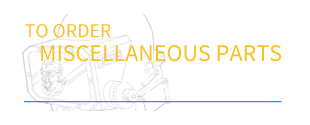Surface Supplied Diving
Surface supplied diving as opposed to SCUBA uses a air compressor and hose to deliver breathing gas to the diver. This type of diving is more complicated than SCUBA in that the diver in most cases requires a tender to operate and monitor the compressor and umbilical lines. While surface supplied diving does restrict freedom of movement (particularly vertically in the water column) the advantages are full communications capability with the surface, and duration only limited by the diver's endurance. It is superior in contaminated water as the diver remains completely dry, and with a free flow system is unlikely to get back flow through the exhaust valve. The heavy weight of the diving outfit which is a impediment on the surface, becomes an asset when working underwater on fixed objects. Where a diver in SCUBA remains near neutrally buoyant a heavy gear diver can virtually anchor him/her self to the bottom. This allows for more natural use of tools as leverage can be applied easily.
Setting up and dressing in a heavy gear diver is a complex process. Below are some interesting videos on YouTube:
Deep Sea Diving: "The Diving Dress" pt1-3 1943 US Navy
Deep Sea Diving: "The Diving Dress" pt2-3 1943 US Navy
Deep Sea Diving: "The Diving Dress" pt3-3 1943 US Navy
Deep Sea Diving: Assembling the Deep Sea Suit pt1-2 1963 US Navy
Deep Sea Diving: Assembling the Deep Sea Suit pt2-2 1963 US Navy
Surface Supplied Diving Equipment
In surface supply the helmet gets all the glory. Collectors worldwide have made the US Navy Mark V Diving Helmet an icon. The Mark V helmet is probably the most collected and widely available diving helmet. No serious collection would be without at least one Mark V.
A diving helmet is useless though without all of the other gear that makes up an "outfit".
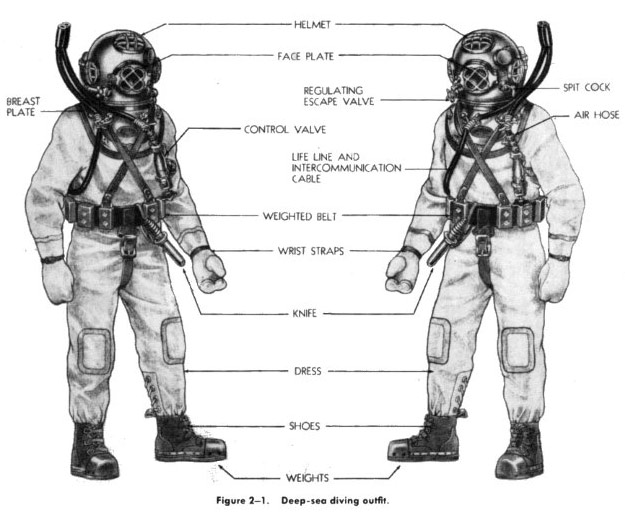
Excerpted from the 1959 USN Diving Manual
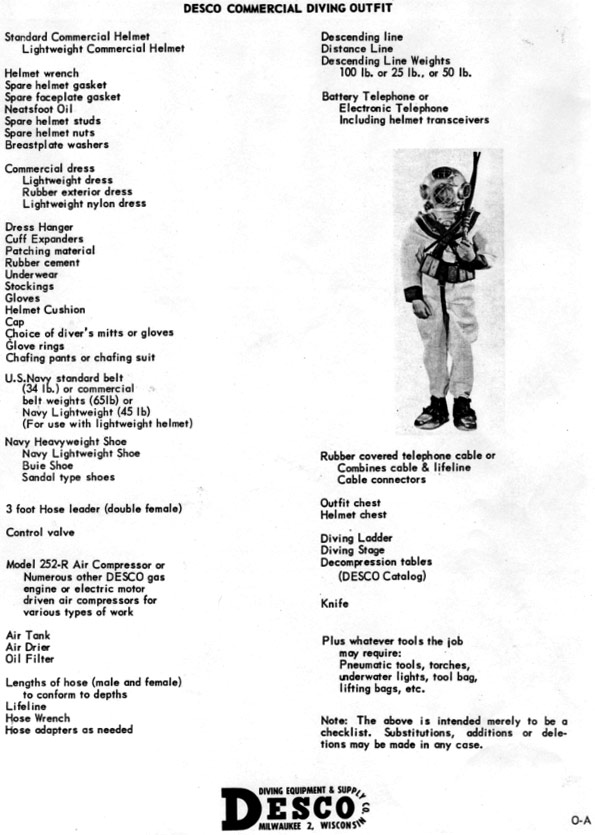
Page from late 1940's DESCO Catalog
First for a diver to survive he needs AIR which is supplied by a compressor through a hose. If more than one diver is working valves and fittings are needed to adapt to the situation.
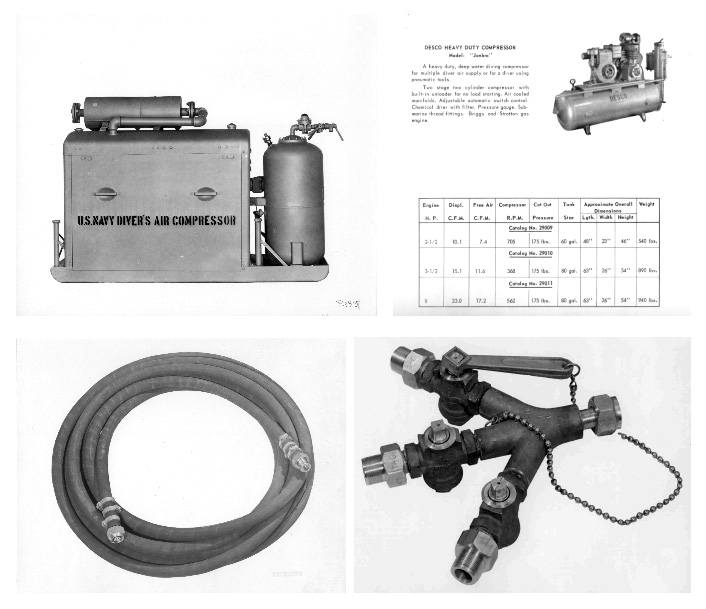
The diver needs an environment where he can function and this is provided by the helmet and dress. In cold water extra protection is needed. Thermal underwear become a necessity. The sleeves of the dress can be sealed by rubber cuffs or by clamps which attach waterproof gloves or mittens to them. The helmet is heavy and a helmet cushion protects the diver's shoulders on the surface.
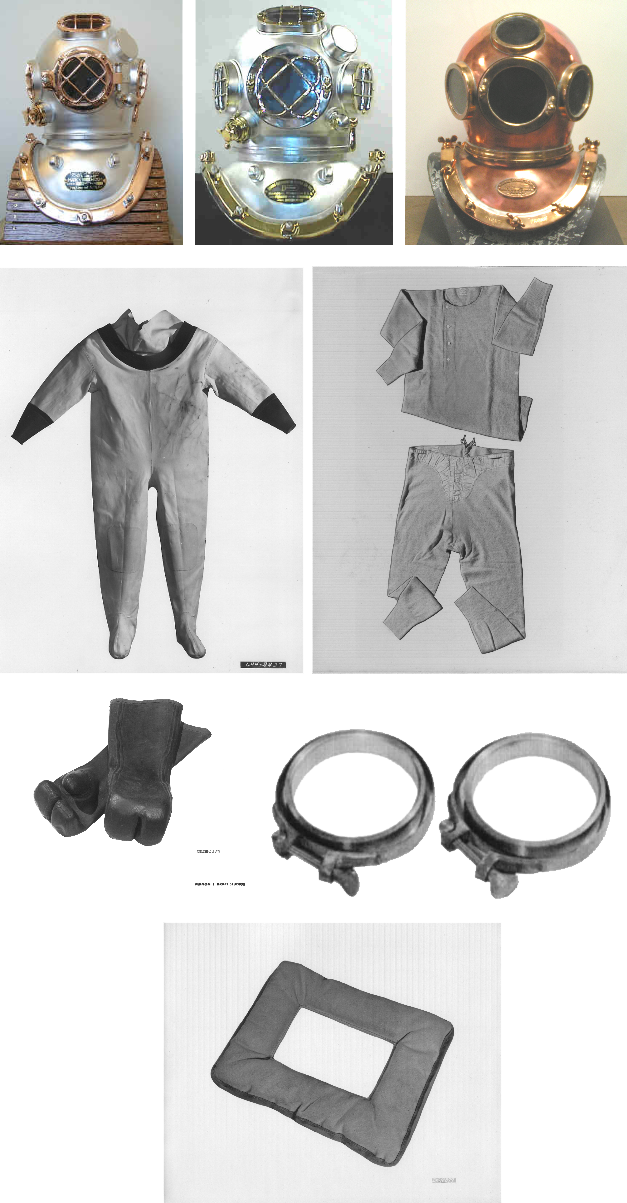
The dress and helmet displace water so to achieve and maintain depth the diver needs ballast in the form of weight on his belt and shoes. Weightbelts and shoes come in either light or heavy models depending on what type of helmet or dress are used. The size of the diver also contributes to the need for weight.
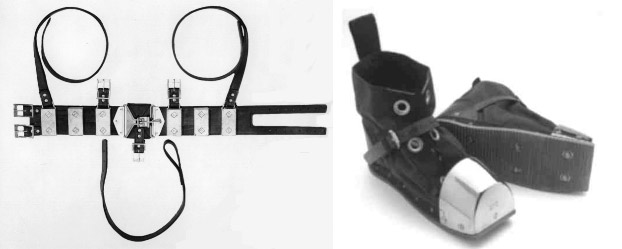
A properly equipped diver never goes into the water without his knife. Where conditions warrant a diver may take a light with him, either battery powered or powered from the surface.

A diver's telephone connects to the helmet and allows the tender to monitor the diver. In a two wire system the tender operates a switch on the telephone when he wishes to talk to the diver. The tender also controls talk between divers.
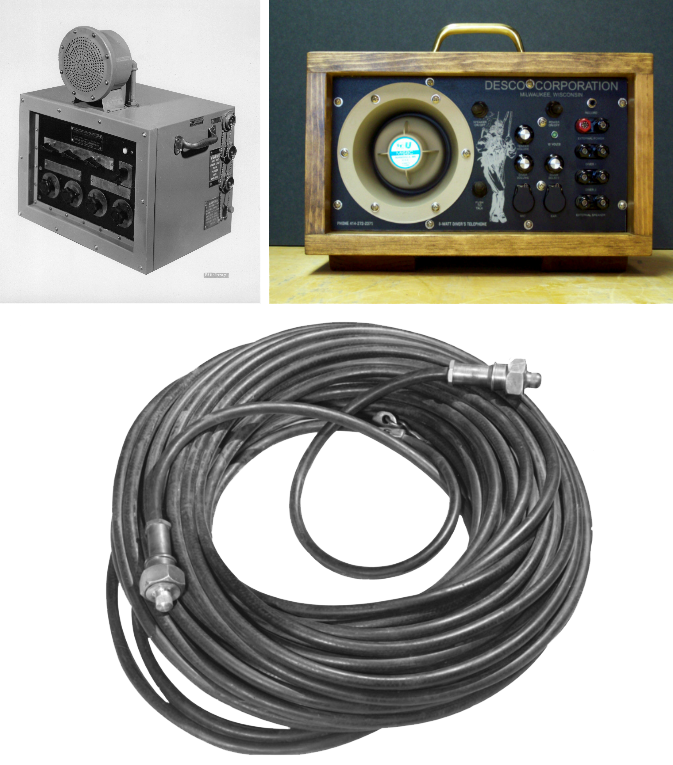
Getting the diver into and out of the water is done by ladder or by using a lifting stage.
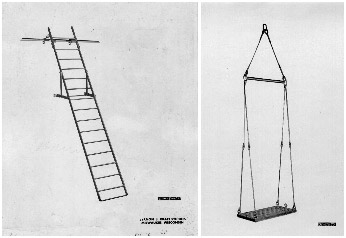
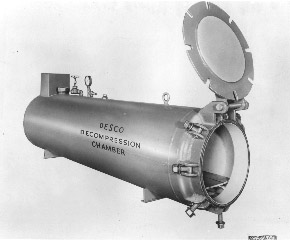 For emergencies a decompression chamber is needed to treat the "Bends". The "Bends", called that from a sufferer's natural inclination to bend over from the pain, is nitrogen gas which has been saturated in tissues in the body is released too fast, creating bubbles in the blood and joints. The nitrogen is from common air which under pressure dissolves into muscle and tissue. Experimentation found that Helium will absorb and disperse much faster than nitrogen in the body and has become a substitute in divers breathing mixture for nitrogen on deep dives.
For emergencies a decompression chamber is needed to treat the "Bends". The "Bends", called that from a sufferer's natural inclination to bend over from the pain, is nitrogen gas which has been saturated in tissues in the body is released too fast, creating bubbles in the blood and joints. The nitrogen is from common air which under pressure dissolves into muscle and tissue. Experimentation found that Helium will absorb and disperse much faster than nitrogen in the body and has become a substitute in divers breathing mixture for nitrogen on deep dives.
The Bends can afflict surface supply divers and SCUBA divers alike. Other workers too can suffer from them. The common name for the Bends is Caisson Disease. It comes from deep tunnel workers suffering from the Bends after coming to the surface when their shifts ended. Caisson's are built at the top of the tunnel so it can be pressurized to prevent flooding. Early hyperbaric research focused on tunnel miners, not divers. Major turn of the century (19th - 20th) underground construction projects like railroad tunnels under rivers, bridge piers, subways, aqueducts, and water intakes all had cause to worry about the Bends.
The Bends are treated by placing the sufferer back under pressure and slowly allowing the nitrogen to dissipate via decompression. This is achieved using a chamber, or by taking the diver back underwater then returning to the surface in stages.
An assortment of tools, spare parts, and materials.
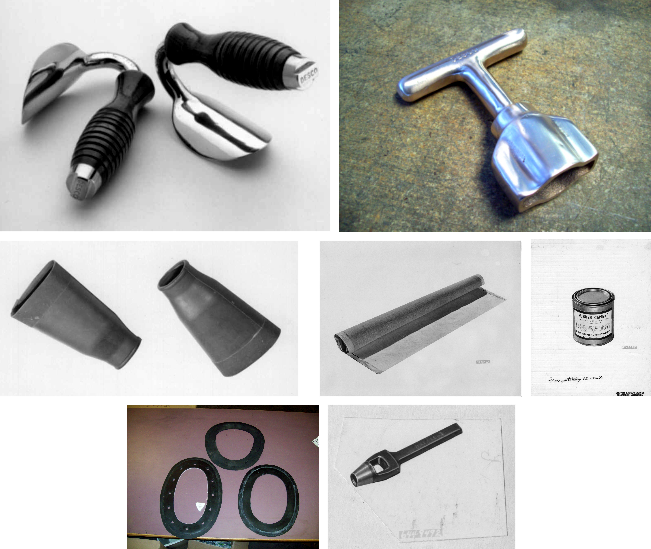
Commercial Diving has a Long History of Exploration Under the Sea
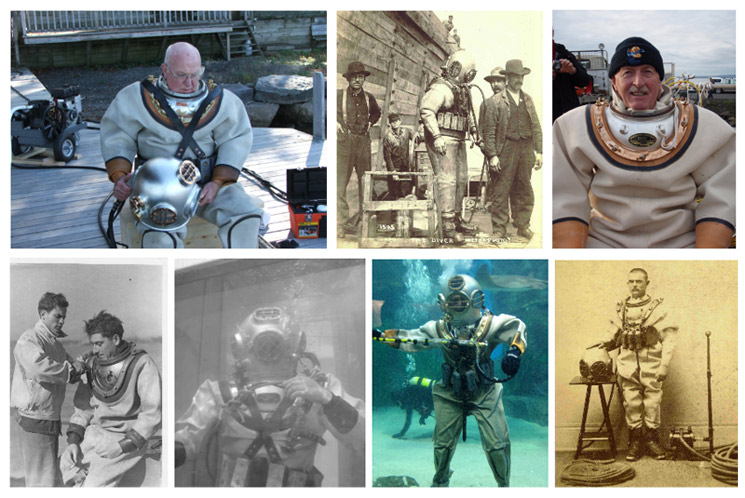
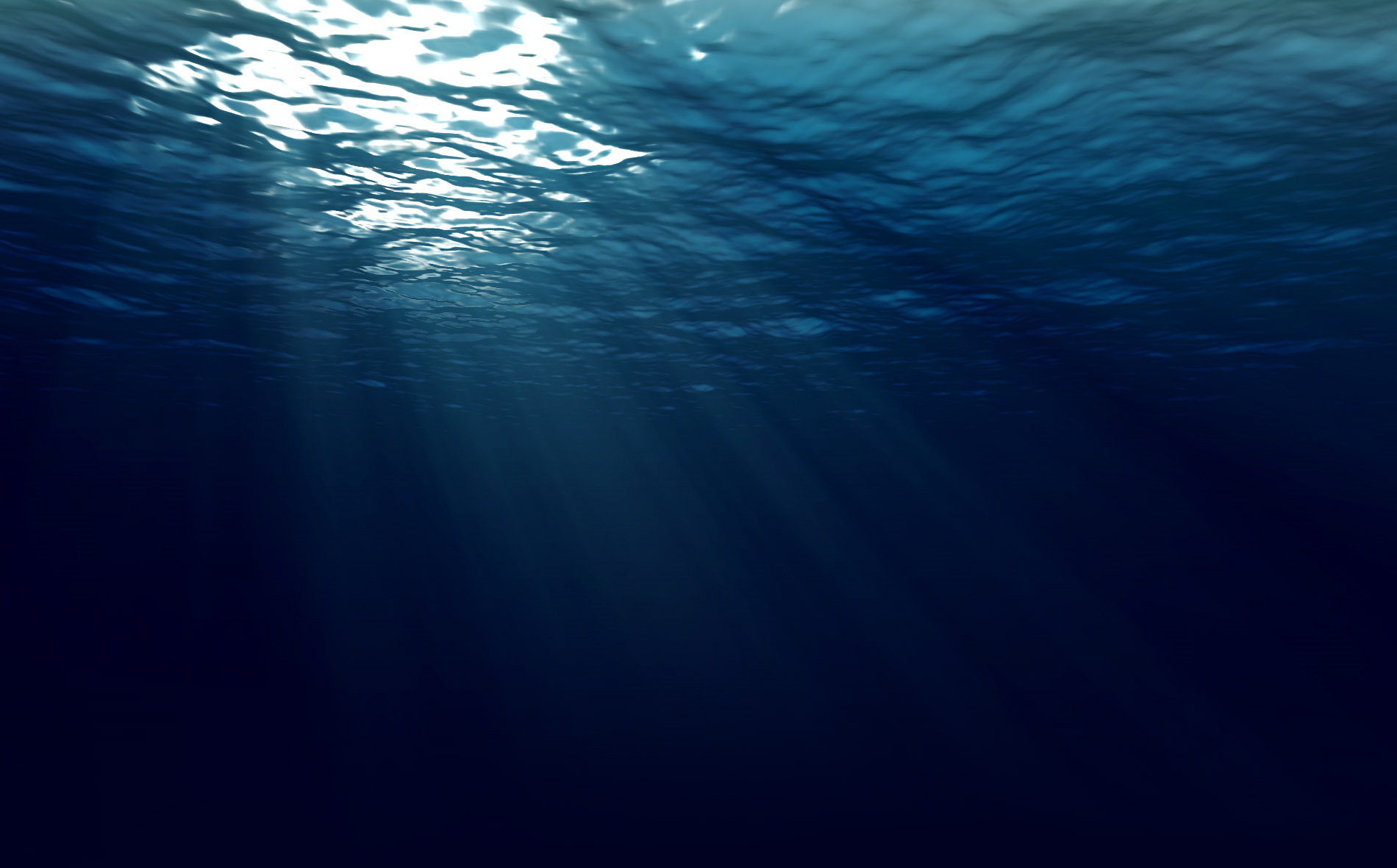

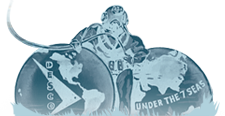

 0 Item(s)
0 Item(s)

